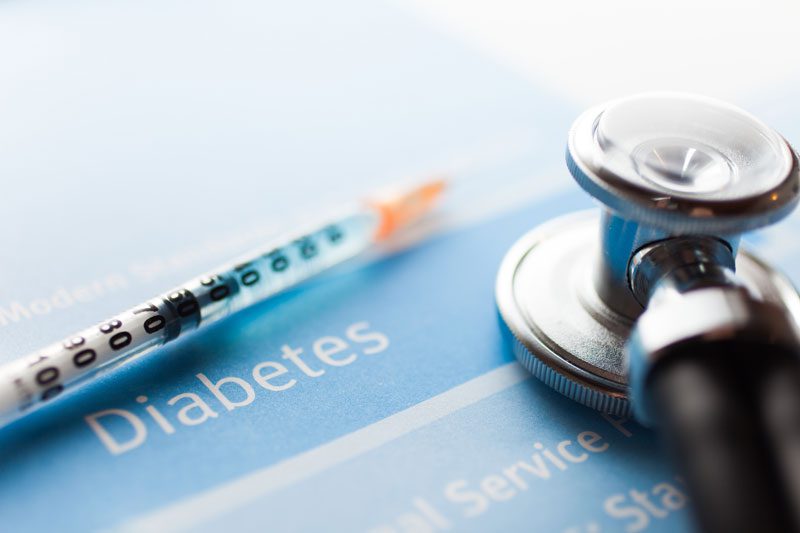Diabetes mellitus, commonly referred to as diabetes, is a chronic medical condition that affects millions of people worldwide. It is characterized by elevated blood sugar levels, which can lead to a range of health complications. Diabetes exists in several forms, but the two most prevalent types are Type 1 and Type 2 diabetes. In this comprehensive article, we will delve into the differences, causes, symptoms, management, and prevention strategies for these two types of diabetes.
I. Diabetes Mellitus: An Overview
Diabetes mellitus is a metabolic disorder that occurs when the body’s ability to regulate blood sugar (glucose) levels is impaired. Glucose is a crucial source of energy for cells, and its absorption and utilization depend on the hormone insulin, produced by the pancreas. When the body fails to produce sufficient insulin or effectively utilize it, blood sugar levels rise, leading to diabetes.
II. Type 1 Diabetes
A. Causes and Mechanism
 Type 1 diabetes, often referred to as juvenile-onset diabetes or insulin-dependent diabetes, typically develops early in life, although it can occur at any age. This form of diabetes is an autoimmune condition in which the immune system mistakenly attacks and destroys insulin-producing beta cells in the pancreas. As a result, the body cannot produce insulin.
Type 1 diabetes, often referred to as juvenile-onset diabetes or insulin-dependent diabetes, typically develops early in life, although it can occur at any age. This form of diabetes is an autoimmune condition in which the immune system mistakenly attacks and destroys insulin-producing beta cells in the pancreas. As a result, the body cannot produce insulin.
B. Symptoms
Symptoms of Type 1 diabetes may appear suddenly and include:
- Excessive thirst and hunger
- Frequent urination
- Unexplained weight loss
- Fatigue
- Blurred vision
- Increased susceptibility to infections
- Irritability
C. Treatment and Management
Management of Type 1 diabetes requires daily insulin therapy, usually administered through injections or an insulin pump. The goal is to regulate blood sugar levels and mimic the body’s natural insulin production. Regular blood sugar monitoring is essential to adjust insulin doses and maintain target levels. A balanced diet, regular physical activity, and close medical supervision are also crucial aspects of Type 1 diabetes management.
III. Type 2 Diabetes
A. Causes and Mechanism
Type 2 diabetes, often called adult-onset diabetes, is the most common form of diabetes, typically developing later in life, although it is increasingly being diagnosed in younger individuals. In Type 2 diabetes, the body still produces insulin, but the cells become resistant to its effects, causing blood sugar levels to rise.
Several factors contribute to Type 2 diabetes, including genetics, obesity, sedentary lifestyle, poor diet, and age. Obesity, in particular, is a significant risk factor, as excess body fat, especially around the abdomen, can lead to insulin resistance.
B. Symptoms
Symptoms of Type 2 diabetes may develop gradually and include:
- Increased thirst and hunger
- Frequent urination
- Fatigue
- Blurred vision
- Slow-healing wounds and infections
- Tingling or numbness in extremities
- Recurrent skin infections
C. Treatment and Management
The management of Type 2 diabetes primarily focuses on lifestyle modifications and, in some cases, oral medications or insulin therapy. Lifestyle changes include adopting a healthy diet, engaging in regular physical activity, losing excess weight, and managing stress. Medications may be prescribed to improve insulin sensitivity or stimulate insulin production. Regular blood sugar monitoring and routine medical check-ups are essential to monitor progress and adjust treatment plans accordingly.
IV. Key Differences Between Type 1 and Type 2 Diabetes
- Causes: Type 1 diabetes is an autoimmune disorder resulting from the destruction of insulin-producing beta cells, whereas Type 2 diabetes is primarily influenced by genetic factors, obesity, and insulin resistance.
- Age of Onset: Type 1 diabetes typically begins in childhood or adolescence, whereas Type 2 diabetes often develops in adulthood, though it is becoming more common in younger individuals due to rising obesity rates.
- Insulin Dependency: Individuals with Type 1 diabetes require lifelong insulin therapy from the time of diagnosis. In Type 2 diabetes, some individuals may manage their condition with lifestyle changes and oral medications, while others may eventually require insulin.
- Symptoms: Symptoms of Type 1 diabetes often appear suddenly and include extreme thirst, frequent urination, and weight loss. Type 2 diabetes symptoms tend to develop gradually and may include fatigue, blurred vision, and slow wound healing.
- Prevention: Type 1 diabetes cannot be prevented, as it is an autoimmune condition. However, Type 2 diabetes can often be prevented or delayed through lifestyle modifications, including weight management, healthy eating, and regular physical activity.
V. Prevention and Risk Reduction
 Preventing Type 1 diabetes is not currently possible, as it is believed to result from genetic and environmental factors beyond our control. However, for Type 2 diabetes, prevention and risk reduction are achievable through the following strategies:
Preventing Type 1 diabetes is not currently possible, as it is believed to result from genetic and environmental factors beyond our control. However, for Type 2 diabetes, prevention and risk reduction are achievable through the following strategies:
- Maintain a Healthy Weight: Achieving and maintaining a healthy weight can significantly reduce the risk of Type 2 diabetes. Losing excess weight, especially around the abdomen, improves insulin sensitivity.
- Adopt a Balanced Diet: Emphasize a diet rich in whole grains, fruits, vegetables, lean proteins, and healthy fats. Minimize the consumption of sugary, processed foods and sugary beverages.
- Regular Physical Activity: Engage in regular physical activity, such as brisk walking, swimming, or cycling, for at least 150 minutes per week. Exercise helps control blood sugar levels and improves insulin sensitivity.
- Limit Alcohol Consumption: If you choose to drink alcohol, do so in moderation. Excessive alcohol consumption can contribute to insulin resistance.
- Don’t Smoke: Smoking is associated with an increased risk of Type 2 diabetes. Quitting smoking can improve overall health and reduce diabetes risk.
- Regular Check-Ups: Periodic medical check-ups can help monitor blood sugar levels and identify any potential issues early. If you have risk factors for Type 2 diabetes, discuss preventive measures with your healthcare provider.
Diabetes mellitus, encompassing Type 1 and Type 2 diabetes, is a complex chronic condition that affects millions of individuals worldwide. While Type 1 diabetes is an autoimmune disorder requiring lifelong insulin therapy, Type 2 diabetes is closely linked to lifestyle factors and often manageable through lifestyle modifications and, in some cases, medication. Both forms of diabetes benefit from early detection and appropriate management to prevent complications and promote overall well-being. Understanding the differences between these two types and adopting preventive measures can help reduce the risk of developing Type 2 diabetes and improve the quality of life for those affected by either form of the condition.



 Type 1 diabetes, often referred to as juvenile-onset diabetes or insulin-dependent diabetes, typically develops early in life, although it can occur at any age. This form of diabetes is an autoimmune condition in which the immune system mistakenly attacks and destroys insulin-producing beta cells in the pancreas. As a result, the body cannot produce insulin.
Type 1 diabetes, often referred to as juvenile-onset diabetes or insulin-dependent diabetes, typically develops early in life, although it can occur at any age. This form of diabetes is an autoimmune condition in which the immune system mistakenly attacks and destroys insulin-producing beta cells in the pancreas. As a result, the body cannot produce insulin. Preventing Type 1 diabetes is not currently possible, as it is believed to result from genetic and environmental factors beyond our control. However, for Type 2 diabetes, prevention and risk reduction are achievable through the following strategies:
Preventing Type 1 diabetes is not currently possible, as it is believed to result from genetic and environmental factors beyond our control. However, for Type 2 diabetes, prevention and risk reduction are achievable through the following strategies: Sudden Onset: Type 1 diabetes often develops rapidly, with symptoms appearing abruptly. This can include a sudden increase in thirst, urination, and hunger, as well as significant weight loss over a short period.
Sudden Onset: Type 1 diabetes often develops rapidly, with symptoms appearing abruptly. This can include a sudden increase in thirst, urination, and hunger, as well as significant weight loss over a short period.
